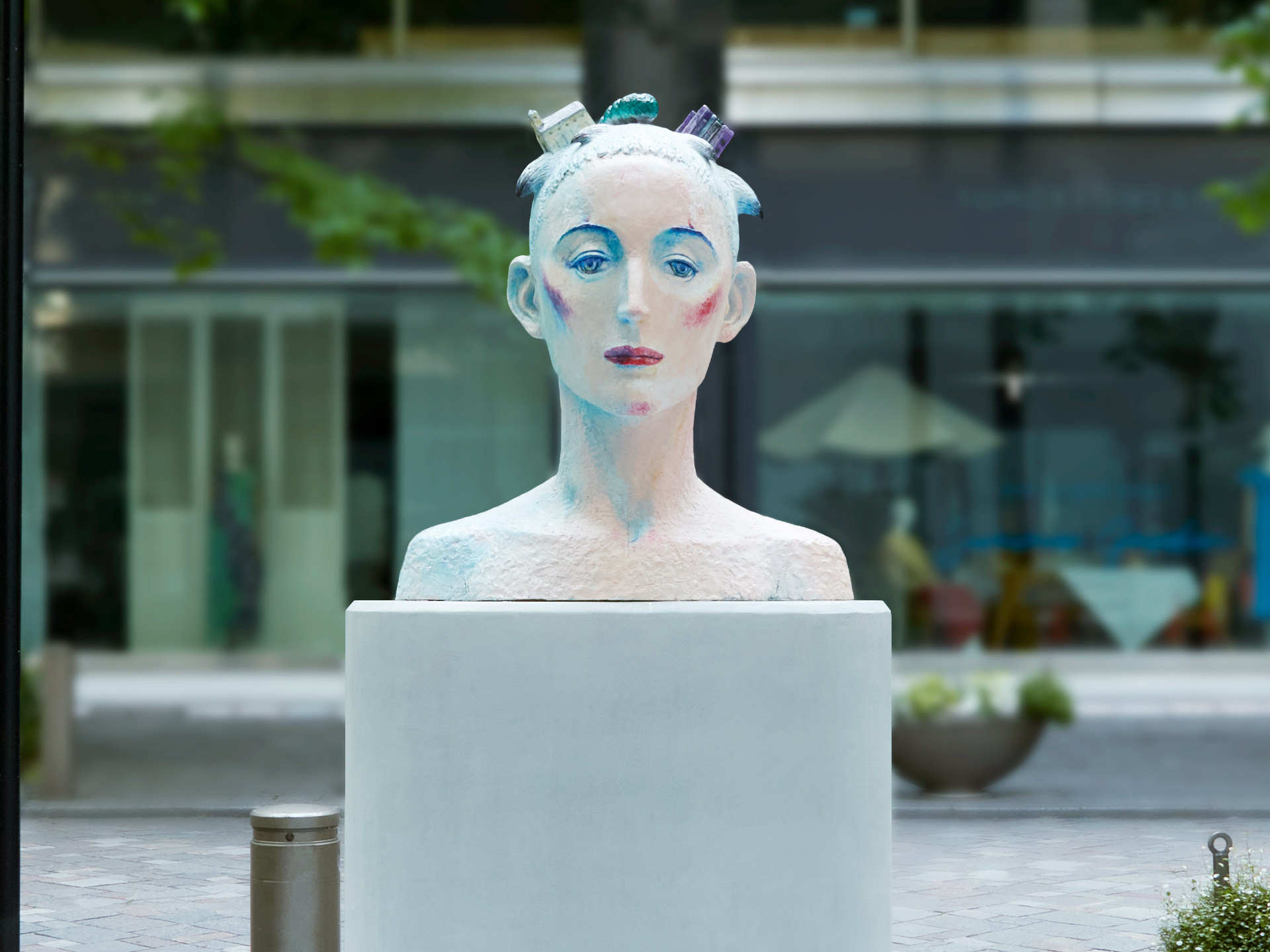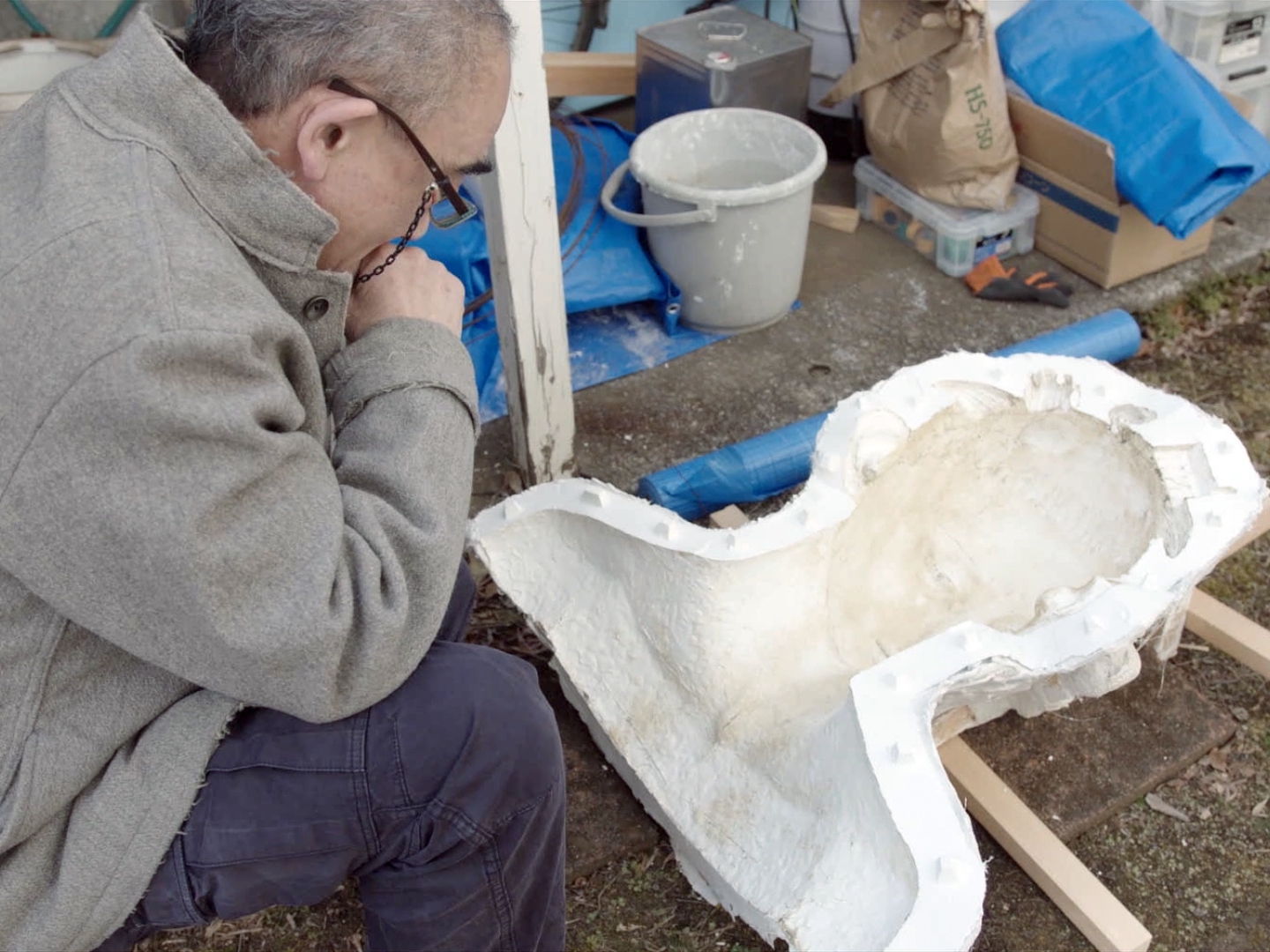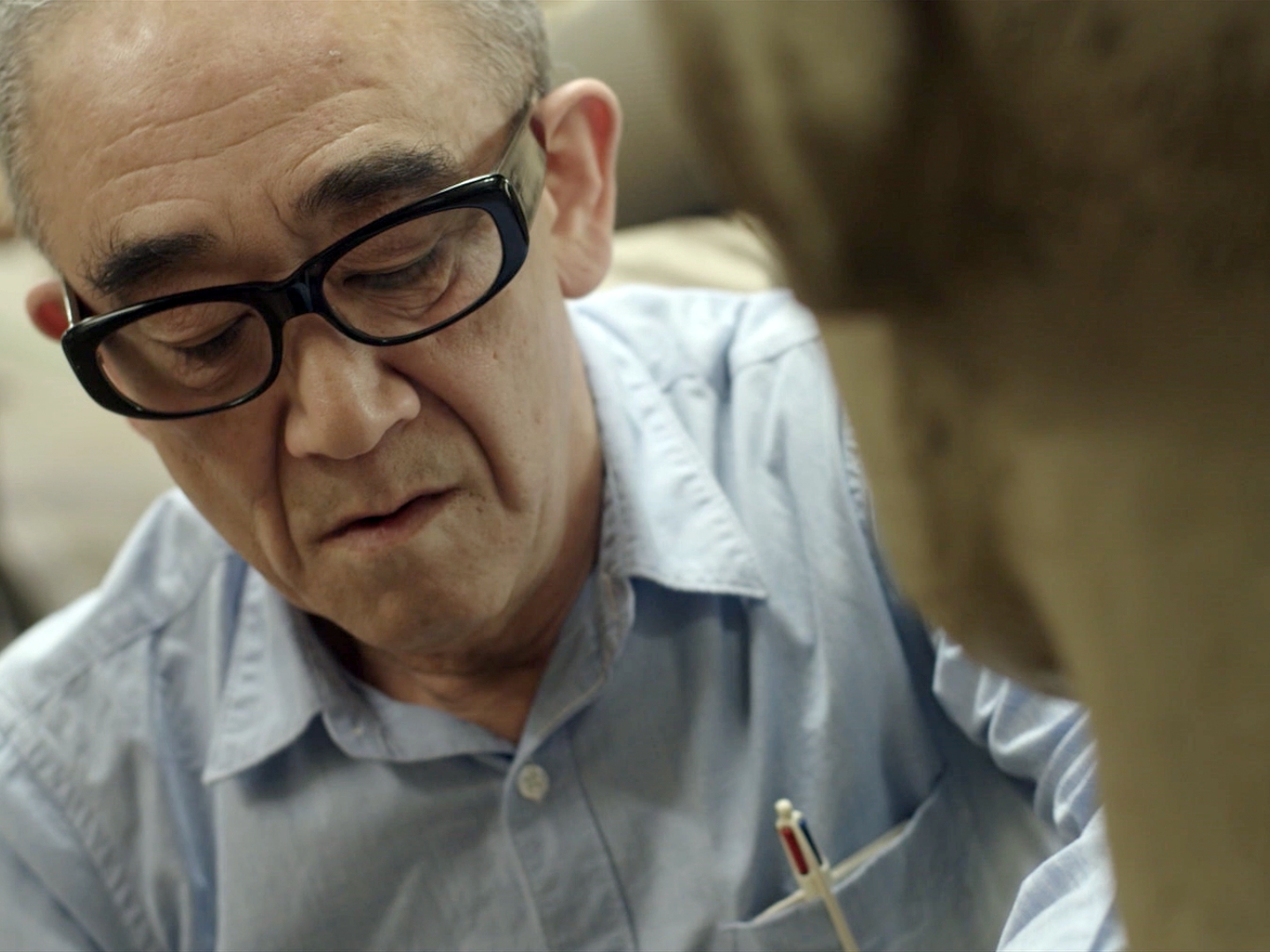——The process of wood carving, where you carve wood, and clay, where you add things to it, seem to be completely opposite processes, but what was the process like creating this time?
It's been a while since I've worked with clay, so it was fun. Adding something and removing it seem to be opposites, but I don't really see any difference in that. I was always working with clay from my childhood until my university days. I started wood carving in earnest towards the end of graduate school when I was asked to create a statue of the Virgin and Child. Although the methods used for wood carving and bronze carving are different, I believe that the goal is the same, so I have never really thought about the difference.
——What is your impression of Marunouchi-Nakadori Ave., the setting for “Marunouchi Street Gallery”?
I used to go there when I was young to go to the movies, so it was one of my favorite places because it was spacious and had a sense of openness. Previously, track and field athlete Dai Marunouchi-Nakadori Ave. (Tokyo Street Athletics in 2007), and I thought it was a good idea to be able to do something like this.
As the number of sculptures I created gradually increased, I started to see more and more works by my friends, including the works of (my friend and sculptor) Misawa (Atsuhiko), and I was jealous of them. However, since I am a wood sculptor, I thought that no one would ask me to do it, but I was very happy when I received an offer saying, ``Would you like to do it in bronze?''
——I understand that it is rare for you to have the opportunity to exhibit your work outdoors, but how do you feel about it being seen as public art?
It's always scary. This also applies to museum exhibitions, but there is always a sense of nervousness when presenting a work in public. I'm always nervous on the opening day of an exhibition or preview to see what kind of reaction it will get. When I hear people say, ``It's beautiful,'' after seeing my work, I feel relieved, as if my stiff body is melting away.
——Finally, please give us a message about “Marunouchi Street Gallery.”
``Marunouchi Street Gallery'' has a good selection of artists, and I think there are masterpieces from a variety of artists. I feel that they are bringing contemporary art to life in a good way on the streets. I'm happy and grateful to be able to participate there. I hope that Marunouchi-Nakadori Ave. will become a street that will bring joy to people who see it, including art works.












